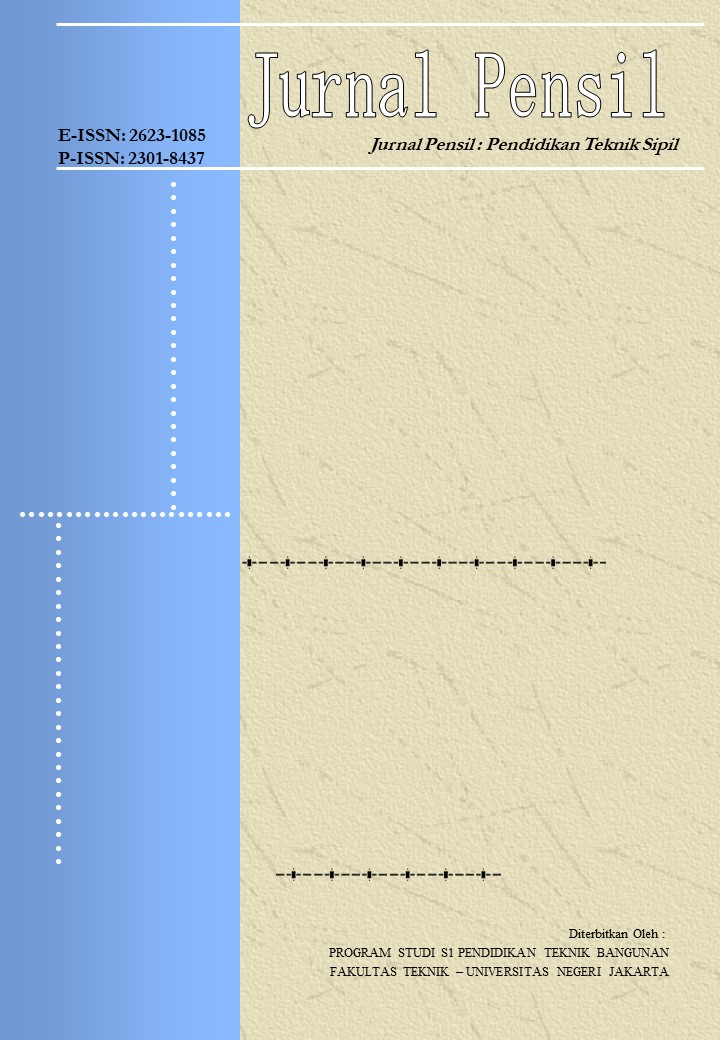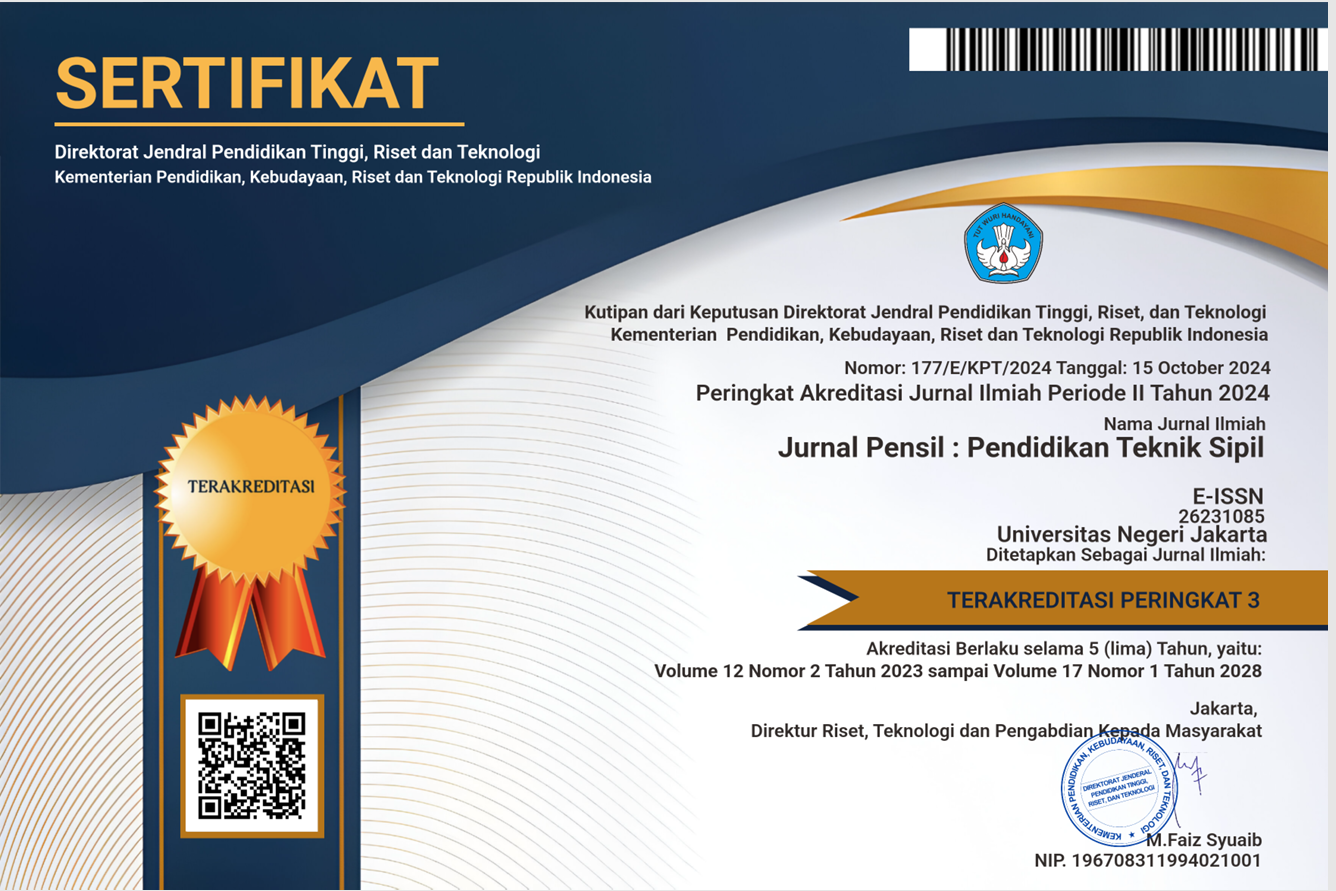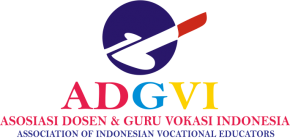PENGARUH MOTIVASI DAN BERPIKIR KRITIS PADA PEMBELAJARAN ONLINE DALAM PERSPEKTIF SISWA SMK
DOI:
https://doi.org/10.21009/jpensil.v10i2.19078Keywords:
Covid-19, Motivasi, Berpikir Kritis, Pembelajaran Online, Siswa SMKAbstract
Abstrak
Ancaman kesehatan dunia saat ini adalah penyakit yang berasal dari virus yang menyerang saluran pernapasan yang disebut Coronavirus Disease 2019 (Covid-19). Karena Covid-19, seluruh sistem kehidupan telah berubah secara besar-besaran di semua aspek kehidupan. Pemerintah di berbagai negara telah menerapkan lockdown. Salah satu dampak lockdown khususnya dalam dunia pendidikan Indonesia adalah pembelajaran dilakukan di rumah secara online. Karena pembelajaran dilakukan secara online maka perlu mendorong siswa untuk merangsang semangat belajar salah satunya dengan meningkatkan motivasi belajar, yang kemudian dengan motivasi tersebut siswa mampu berpikir kritis untuk memperoleh prestasi yang diinginkan. Penelitian ini bertujuan untuk mendeskripsikan motivasi dan berpikir kritis selama pembelajaran online. Metode deskriptif digunakan dalam penelitian ini dan menggunakan google form untuk mengumpulkan data survei dari beberapa SMK di beberapa kota di Indonesia. Penelitian ini dilakukan selama bulan November 2020. Hasil penelitian menunjukkan bahwa tidak terdapat pengaruh yang signifikan antara motivasi dan berpikir kritis terhadap hasil belajar online pada SMK.
Kata kunci: Covid-19, Motivasi, Berpikir Kritis, Pembelajaran Online, Siswa SMK
Abstract
The current world health threat is a disease originating from a virus that attacks the respiratory tract, and recently it has been called Coronavirus Disease 2019 (Covid-19). Because of Covid-19, the entire system of life has changed massively in all aspects of life. Governments in various countries have implemented lockdowns. One of the effects of the lockdown, especially in Indonesian education, is that learning is carried out at home online. Because learning is carried out online, it is necessary to encourage students to stimulate the enthusiasm for learning, one of which is by increasing learning motivation, which is then with that motivation students are able to think critically to obtain the desired achievement. This study aims to describe motivation and critical thinking during online learning. Descriptive method is used in this research and google form is used for survey data collection from several vocational high schools in several cities in Indonesia. This research was conducted during November 2020. The results showed that there was no significant influence between motivation and critical thinking on online learning outcomes in vocational high school students.
Keywords: Covid-19, Motivation, Critical Thinking, Online Learning, Vocational School Students
References
Anggrawan, A. (2019). Analisis Deskriptif Hasil Belajar Pembelajaran Tatap Muka dan Pembelajaran Online Menurut Gaya Belajar Mahasiswa. MATRIK : Jurnal Manajemen, Teknik Informatika Dan Rekayasa Komputer, 18(2), 339–346. https://doi.org/10.30812/matrik.v18i2.411
Averkieva, L., Chayka, Y., & Glushkov, S. (2015). Web Quest as a Tool for Increasing Students’ Motivation and Critical Thinking Development. Procedia - Social and Behavioral Sciences, 206(November), 137–140. https://doi.org/10.1016/j.sbspro.2015.10.042
Cahyani, A., Listiana, I. D., & Larasati, S. P. D. (2020). Motivasi Belajar Siswa SMA pada Pembelajaran Daring di Masa Pandemi Covid-19. IQ (Ilmu Al-Qur’an): Jurnal Pendidikan Islam, 3(01), 123–140. https://doi.org/10.37542/iq.v3i01.57
Dinar Tiara Nadip Putri Gatot Isnani. (2015). Pengaruh Minat Dan Motivasi Terhadap Hasil Belajar Pada Mata Pelajaran Pengantar Administrasi Perkantoran Dinar. Jurnal Pendidikan Bisnis Dan Manajemen, 1(5), 118–124.
Fauci, A. S., Lane, H. C., & Redfield, R. R. (2020). Covid-19—navigating the uncharted. Mass Medical Soc.
Hakim, A. (2010). Model Pengembangan Kewirausahaan Sekolah Menengah Kejuruan ( Smk ) Dalam Menciptakan Kemandirian Sekolah. Riptek, 4(1), 1–14.
Hanum, N. S. (2013). Keefetifan e-learning sebagai media pembelajaran (studi evaluasi model pembelajaran e-learning SMK Telkom Sandhy Putra Purwokerto). Jurnal Pendidikan Vokasi, 3(1), 90–102. https://doi.org/10.21831/jpv.v3i1.1584
Harasym, P. H., Tsai, T. C., & Hemmati, P. (2008). Current trends in developing medical students’ critical thinking abilities. Kaohsiung Journal of Medical Sciences, 24(7), 341–355. https://doi.org/10.1016/S1607-551X(08)70131-1
Ibda, H. (2018). Penguatan Literasi Baru Pada Guru Madrasah Ibtidaiyah Dalam Menjawab Tantangan Era Revolusi Industri 4.0. Journal of Research and Thought on Islamic Education (JRTIE), 1(1), 1–21. https://doi.org/10.24260/jrtie.v1i1.1064
Ichsan, I. Z., Rahmayanti, H., Purwanto, A., Sigit, D. V., Kurniawan, E., Dewi, A. K., Wirdianti, N., Hermawati, F. M., & Marhento, G. (2020). PEMBELAJARAN SAINS DAN LINGKUNGAN DI SMP yang berisi himbauan kepada masyarakat untuk melakukan Physical Distancing ( menjaga. E- Journal UMM, 6, 50–61.
Ku, K. Y. L., Kong, Q., Song, Y., Deng, L., Kang, Y., & Hu, A. (2019). What predicts adolescents’ critical thinking about real-life news? The roles of social media news consumption and news media literacy. Thinking Skills and Creativity, 33(May), 100570. https://doi.org/10.1016/j.tsc.2019.05.004
Kumar, V., & Nanda, P. (2019). Social media in higher education: A framework for continuous engagement. International Journal of Information and Communication Technology Education, 15(1), 109–120. https://doi.org/10.4018/IJICTE.2019010108
Malekian, F., Akhtar, M., & kakabaraee, K. (2013). Designing Training Math in Fifth Grade (Based on Logical Approach) and the Role of It on Critical Thoughts, Behaviour and Students Academic Motivation. Procedia - Social and Behavioral Sciences, 82, 790–795. https://doi.org/10.1016/j.sbspro.2013.06.350
Nursalam, 2016, metode penelitian, & Fallis, A. . (2013). Efektivitas Metode Pembelajaran Daring Terhadap Motivasi Belajar Mahasiswa Saat Pandemi Covid 19 Di Kota Pekanbaru Nia. Journal of Chemical Information and Modeling, 53(9), 1689–1699.
Polat, Ö., & Aydın, E. (2020). The effect of mind mapping on young children’s critical thinking skills. Thinking Skills and Creativity, 38. https://doi.org/10.1016/j.tsc.2020.100743
Pujiasih, E. (2020). Membangun Generasi Emas Dengan Variasi Pembelajaran Online Di Masa Pandemi Covid-19. Ideguru: Jurnal Karya Ilmiah Guru, 5(1), 42–48. https://doi.org/10.51169/ideguru.v5i1.136
Quinn, S., Hogan, M., Dwyer, C., Finn, P., & Fogarty, E. (2020). Development and Validation of the Student-Educator Negotiated Critical Thinking Dispositions Scale (SENCTDS). Thinking Skills and Creativity, 38(August), 100710. https://doi.org/10.1016/j.tsc.2020.100710
Sadikin, A., & Hamidah, A. (2020). Pembelajaran Daring di Tengah Wabah Covid-19. Biodik, 6(2), 109–119. https://doi.org/10.22437/bio.v6i2.9759
Seibert, S. A. (2020). Problem-based learning: A strategy to foster generation Z’s critical thinking and perseverance. Teaching and Learning in Nursing, 16(1), 85–88. https://doi.org/10.1016/j.teln.2020.09.002
Sjukur, S. B. (2013). Pengaruh blended learning terhadap motivasi belajar dan hasil belajar siswa di tingkat SMK. Jurnal Pendidikan Vokasi, 2(3), 368–378. https://doi.org/10.21831/jpv.v2i3.1043
Syah, R. H. (2020). Dampak Covid-19 pada Pendidikan di Indonesia: Sekolah, Keterampilan, dan Proses Pembelajaran. SALAM: Jurnal Sosial Dan Budaya Syar-I, 7(5), 395–402. https://doi.org/10.15408/sjsbs.v7i5.15314
Umairah, P. (2020). Peningkatan Motivasi Belajar Menggunakan “ Google Classroom ” Ditengah Pandemi Covid-19 Pada Peserta Didik Kelas Xi Ips 4 Sman 1 Bangkinang Kota. Journal On Education, 02(03), 275–285. http://www.jonedu.org/index.php/joe/article/view/319/250
Wibowo, N. (2016). Upaya Memperkecil Kesenjangan Kompetensi Lulusan Sekolah Menengah Kejuruan dengan Tuntutan Dunia Industri. Jurnal Pendidikan Teknologi Dan Kejuruan, 23(1), 45. https://doi.org/10.21831/jptk.v23i1.9354












.png)
.png)
1.png)

